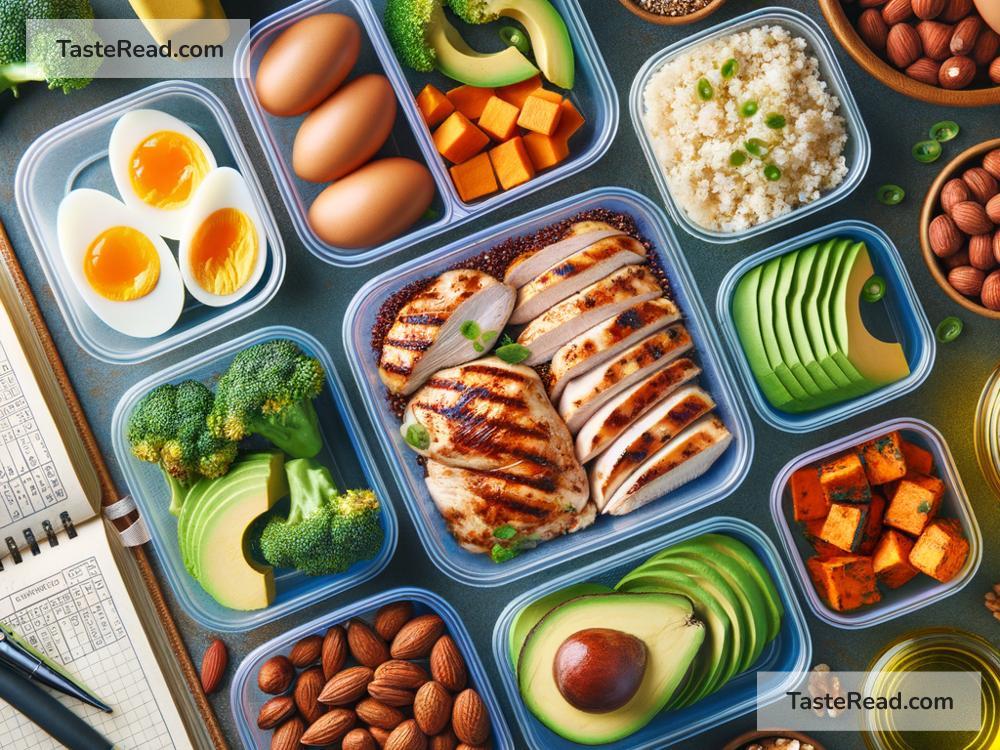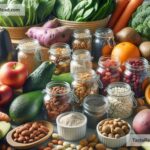How to Plan Meals for Optimal Muscle Growth: A Simple Guide
If you’re working hard in the gym to build muscle, what you eat is just as important as your workout routine. Your body needs the right nutrients to repair muscle tissue and help it grow stronger and bigger. Planning meals for muscle growth doesn’t have to be complicated—it just requires a little knowledge and preparation. Let’s break it down step by step in plain language.
Why Nutrition Is Important for Muscle Growth
Every time you lift weights or train, tiny tears form in your muscle fibers. Your body repairs these tears using proteins, carbohydrates, healthy fats, and other nutrients. This process strengthens and builds muscle. Without the right food, your muscles won’t get the fuel they need to grow.
In simple terms, eating properly is like filling up your car with the right type of fuel—it helps your body perform at its best.
Step 1: Know Your Key Nutrients
To support muscle growth, you need three main nutrients: protein, carbohydrates, and healthy fats. Let’s take a quick look at why each is important:
-
Protein: This is the building block of muscle. You can find protein in foods like chicken, fish, eggs, tofu, beans, and dairy products. Aim for at least 1 gram of protein per pound of your body weight each day (e.g., if you weigh 150 pounds, try to eat 150 grams of protein daily).
-
Carbohydrates: Carbs are your body’s main energy source. They help you power through workouts and assist in muscle recovery. Choose slow-digesting carbs like rice, potatoes, oats, whole-grain bread, and fruits.
-
Healthy Fats: Fats are essential for hormone production, including testosterone, which plays a role in muscle building. Focus on fats from sources like nuts, seeds, avocados, olive oil, and fatty fish.
You’ll also need vitamins, minerals, and water to keep your body healthy and hydrated.
Step 2: Determine Your Calorie Needs
To grow muscle, you need to eat more calories than your body burns. This is called a “calorie surplus.” But don’t overeat—if you gain weight too quickly, you might put on unwanted fat rather than muscle.
Here’s how to calculate your daily calorie target:
1. First, find your “maintenance calories” (the number of calories you need to maintain your current weight). Use an online calorie calculator to estimate this based on your age, weight, height, and activity level.
2. Add 250–500 calories to your maintenance calories for a slow and steady muscle-building process.
For example, if your maintenance calories are 2,500, aim to eat about 2,750–3,000 calories daily.
Step 3: Create Balanced Meals
Once you know your calorie and nutrient goals, you can start planning your meals. A balanced meal typically includes:
– A high-protein food (e.g., chicken, eggs, or tofu)
– A source of carbohydrates (e.g., rice, oats, or sweet potatoes)
– Healthy fats (e.g., avocado, nuts, or olive oil)
– Vegetables (for vitamins, minerals, and fiber)
Here’s an example of a muscle-building meal:
– Grilled chicken breast (protein)
– Brown rice (carbohydrates)
– Steamed broccoli (vegetables)
– Sliced avocado (healthy fat)
Step 4: Meal Timing
When you eat can be almost as important as what you eat. Here are some simple guidelines to maximize muscle growth:
– Eat every 3–4 hours: This helps your body stay fueled and keeps you in a muscle-building state.
– Protein before and after workouts: Normally, a protein-rich meal or snack 1–2 hours before training and within an hour after working out is ideal. After exercising, pair protein with carbs to help muscles recover faster (e.g., a whey protein shake with a banana).
– Don’t skip breakfast or late-night snacks: Starting the day with protein helps your muscles recover from sleep, and having a snack before bed ensures your body continues repairing tissue overnight.
Step 5: Prepare Ahead of Time
We all have busy lives, but planning ahead ensures you’re eating the right foods for muscle growth. Some tips:
1. Cook in batches: Grill chicken breasts, roast vegetables, or boil rice in large amounts so you have ready-made meals during the week.
2. Use containers: Store your meals in containers so you can grab them on busy days.
3. Keep healthy snacks on hand: Protein bars, nuts, or Greek yogurt are great options if you’re on the go.
Step 6: Stay Consistent
Consistency is key. Eating well for one day won’t build muscle—you need to stick to your meal plan for weeks and months. Track your progress, adjust your calorie intake if you’re not gaining muscle, and stay committed to your workouts and nutrition.
Step 7: Don’t Forget Hydration
Drinking enough water is crucial for muscle growth. Water helps transport nutrients to your muscles and keeps your body functioning properly. Aim to drink at least half a gallon (2 liters) of water daily, or more if you sweat a lot during workouts.
Sample Muscle-Building Meal Plan
Here’s an example of a one-day plan for muscle growth:
– Breakfast: Scrambled eggs, whole-grain toast, avocado, and orange juice
– Mid-morning snack: Greek yogurt with berries and a handful of almonds
– Lunch: Grilled salmon, quinoa, and steamed vegetables
– Post-workout snack: Protein shake with banana
– Dinner: Lean beef, mashed potatoes, roasted asparagus
– Late-night snack: Cottage cheese with peanut butter
Wrap-Up
Building muscle doesn’t just happen in the gym—it starts in the kitchen. By eating the right foods in the right amounts at the right times, you’ll give your body everything it needs to grow stronger. Stick to your plan, stay consistent, and watch your hard work pay off with bigger, healthier muscles!


